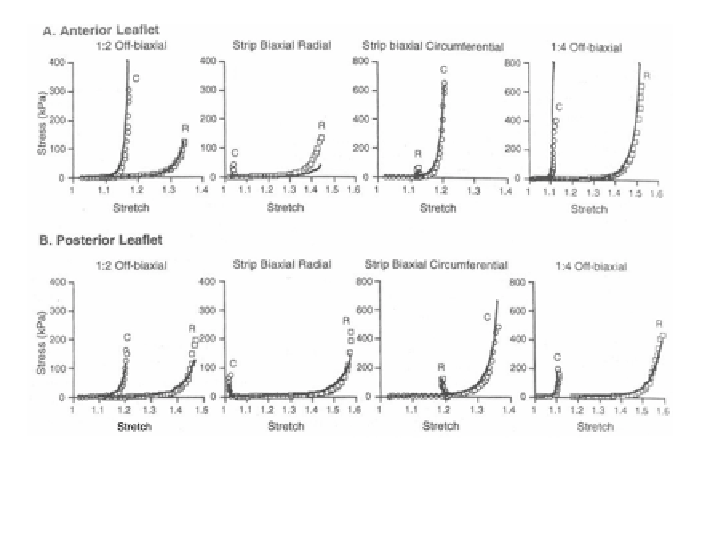Biomedical Engineering Reference
In-Depth Information
molecular basis or strain-energy functions, and can be verified by comparing
measurements taken from experiments subjecting tissues to well-defined stresses
and strains.
Biological tissues are, in general, highly nonlinear and anisotropic. Many
models exist that can cover a wide range of materials, for example, a model for
any rubber-like or soft biological tissue (33). In other cases, a general constitu-
tive model is modified and fit to a specific tissue. There are models specifically
for mitral valve tissue (56) (Figure 14), aortic heart valves (51), skin (7), myo-
Figure 14
. Experimental and theoretical curves for stretching mitral valve tissue in a
variety of situations, showing a good match between experiment and model (56).
cardium (34), cartilage, tendons, blood vessel walls, and others. A common con-
stitutive equation used for the representation of biological tissues is
t
= -
pI
+ 2
W
1
B
+ (
W
B
/B)
F
#
N
T
N
#
F
T
,
[1]
where
t
is the Cauchy stress,
p
is the Lagrange multiplier,
B
is the right Cauchy-
Green deformation tensor,
F
is the deformation gradient tensor,
W
1
and
W
B
are
the derivatives of
W
with respect to B and the first invariant, respectively, and
W
is a strain-energy function that can be chosen depending on the tissue in ques-
tion.
Constitutive models are matched to biological data by performing stress-
strain experiments on excised tissue. Data may be taken for uniaxial tension
(15), biaxial tension (35,52), compression, or any other arrangement the experi-

